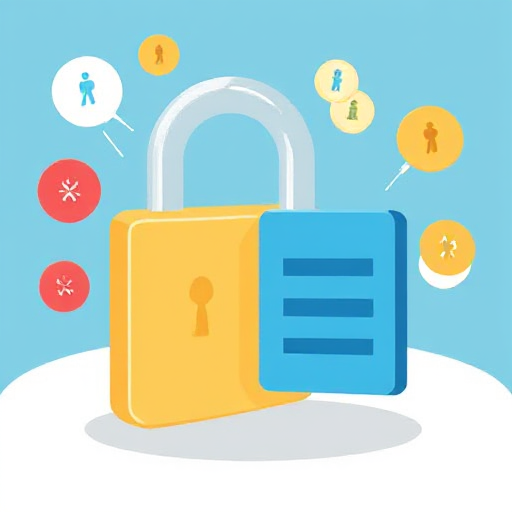
Strong passwords are one of the most important lines of defense against unauthorized access to your personal information. With cyber threats becoming more sophisticated, simply using “password123” or your pet’s name is no longer secure enough. A strong password, when properly managed, can significantly reduce the risk of being hacked. But creating a strong password is just one part of the equation. It’s equally important to make sure you can remember it, especially since online security often requires numerous accounts with different passwords.
This article will guide you through creating strong passwords and provide tips on how to manage and remember them without falling into the trap of reusing weak passwords.
1. What Makes a Strong Password?
A strong password is one that’s difficult for hackers or automated systems to guess. The key characteristics of a strong password include:
- Length: Aim for a password that’s at least 12 characters long. The longer the password, the more secure it tends to be.
- Complexity: Use a combination of uppercase letters, lowercase letters, numbers, and special characters (e.g., !, @, #, $, etc.). This increases the number of possible combinations, making your password harder to crack.
- Unpredictability: Avoid using easily guessable information like names, birthdays, or common phrases. Instead, aim for a random combination of characters or words.
- Uniqueness: Never reuse passwords across multiple accounts. If a hacker gets access to one account, they might try the same password on your other accounts.
Example of a Strong Password:
- N3tW0rK!9@2025s#Qz
This password is long, includes a variety of characters, and doesn’t rely on any personal or predictable information.
2. How to Create Strong Passwords
There are several strategies you can use to generate strong passwords:
2.1 Use a Password Manager
A password manager is a software application that helps you store and generate passwords securely. It can create complex passwords for you, and since it remembers them, you don’t have to.
- How it Works: A password manager stores your passwords encrypted in a secure vault, accessible by a master password. It can also generate strong, random passwords for every account, ensuring you don’t reuse them.
- Popular Password Managers: LastPass, Dashlane, 1Password, and Bitwarden.
2.2 Use Passphrases
A passphrase is a sequence of random words strung together to form a sentence or phrase. While they are easier to remember than random characters, they can still be incredibly secure if chosen carefully.
- How to Create a Strong Passphrase: Pick four or more random words that have no obvious connection. Add a combination of numbers and special characters between the words to increase security.
Example of a Strong Passphrase:
- Banana!Flute7Purple$Cloud
Passphrases are usually easier to remember than random strings of characters but can be just as secure if done right.
2.3 Avoid Common Password Pitfalls
Avoid passwords that are too predictable or widely used. Some common mistakes include:
- Using common phrases or quotes like “iloveyou” or “letmein”.
- Using sequential or repeated characters such as “123456” or “aaaaaa”.
- Using personal information like your name, birthdate, or pet’s name.
3. How to Remember Your Strong Passwords
Even if you create a strong password, remembering it can be challenging, especially if you have many accounts. Here are some strategies to help you remember your passwords securely:
3.1 Use a Password Manager (Again)
As mentioned, password managers not only store your passwords securely but also help you remember them. With a password manager, you only need to remember one master password, and it will handle the rest.
3.2 Create a Memory Hook
For each password, create a personal memory hook or story that links the password elements together. For example, if your password is R3@lL!fe$2025, you could think of a story: “In the real world, life is unpredictable and full of surprises, and 2025 is the year I want to achieve my goals.”
3.3 Break Your Password into Smaller Chunks
If the password is long, divide it into smaller, memorable chunks. For instance, instead of trying to remember N3tW0rK!9@2025s#Qz, you can break it down into N3tW0rK, 9@2025, and s#Qz and memorize these parts separately.
3.4 Use Two-Factor Authentication (2FA)
While 2FA doesn’t directly help you remember passwords, it provides an extra layer of security so that even if someone figures out your password, they won’t be able to access your account without a second form of verification (such as a one-time code sent to your phone).
4. Best Practices for Keeping Passwords Secure
Creating strong passwords is only part of maintaining security. Once you have a strong password, here are some best practices to follow:
- Enable Two-Factor Authentication (2FA): Always enable 2FA whenever possible. Even if someone gets your password, they won’t be able to access your account without the second form of authentication.
- Change Your Password Regularly: If you suspect that your password may have been compromised, change it immediately. It’s a good idea to change passwords every few months for better security.
- Avoid Public Wi-Fi for Sensitive Accounts: Public Wi-Fi networks are often insecure. If possible, avoid logging into sensitive accounts when connected to public Wi-Fi.
- Monitor Your Accounts: Keep an eye on your bank accounts and emails for any signs of suspicious activity, such as unauthorized logins or unfamiliar transactions.
Creating and remembering strong passwords can be challenging, but with the right strategies, it becomes much easier. By using password managers, passphrases, and techniques like breaking your passwords into chunks, you can create strong passwords and ensure they’re memorable. The key to securing your online accounts is not only having a strong password but also adopting best practices like enabling two-factor authentication and regularly updating passwords.
In the end, online security is a continuous process, and adopting these habits will help you stay one step ahead of potential threats while ensuring you can easily access your accounts when needed. Stay safe online!






